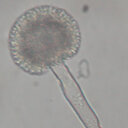Specifically expressed genes of the nematode Bursaphelenchus xylophilus involved with early interactions with pine trees.
Ključne riječi
Sažetak
As the causal agent of pine wilt disease (PWD), the pine wood nematode (PWN), Bursaphelenchus xylophilus, causes huge economic losses by devastating pine forests worldwide. However, the pathogenesis-related genes of B. xylophilus are not well characterized. Thus, DNA microarrays were used to investigate differential gene expression in PWN where Pinus thunbergii was inoculated with nematodes, compared with those cultured on Botrytis cinerea. The microarrays comprised 31121 probes, 1310 (4.2%) of which were differentially regulated (changes of >2-fold, P < 0.01) in the two growth conditions. Of these 1310 genes, 633 genes were upregulated, whereas 677 genes were downregulated. Gene Ontology (GO) categories were assigned to the classes Cellular Component, Molecular Function, and Biological Process. The comparative gene expression analysis showed that a large number of the pathogenesis-related genes of B. xylophilus, such as pectate lyase genes, cytochrome P450s, UGTs, and ABC transporter genes, were highly expressed when B. xylophilus infected P. thunbergii. Annotation analysis indicated that these genes contributed to cell wall degradation, detoxification, and the reproduction process. The microarray results were validated using quantitative RT-PCR (qRT-PCR). The microarray data confirmed the specific expression of B. xylophilus genes during infection of P. thunbergii, which provides basic information that facilitates a better understanding of the molecular mechanism of PWD.


